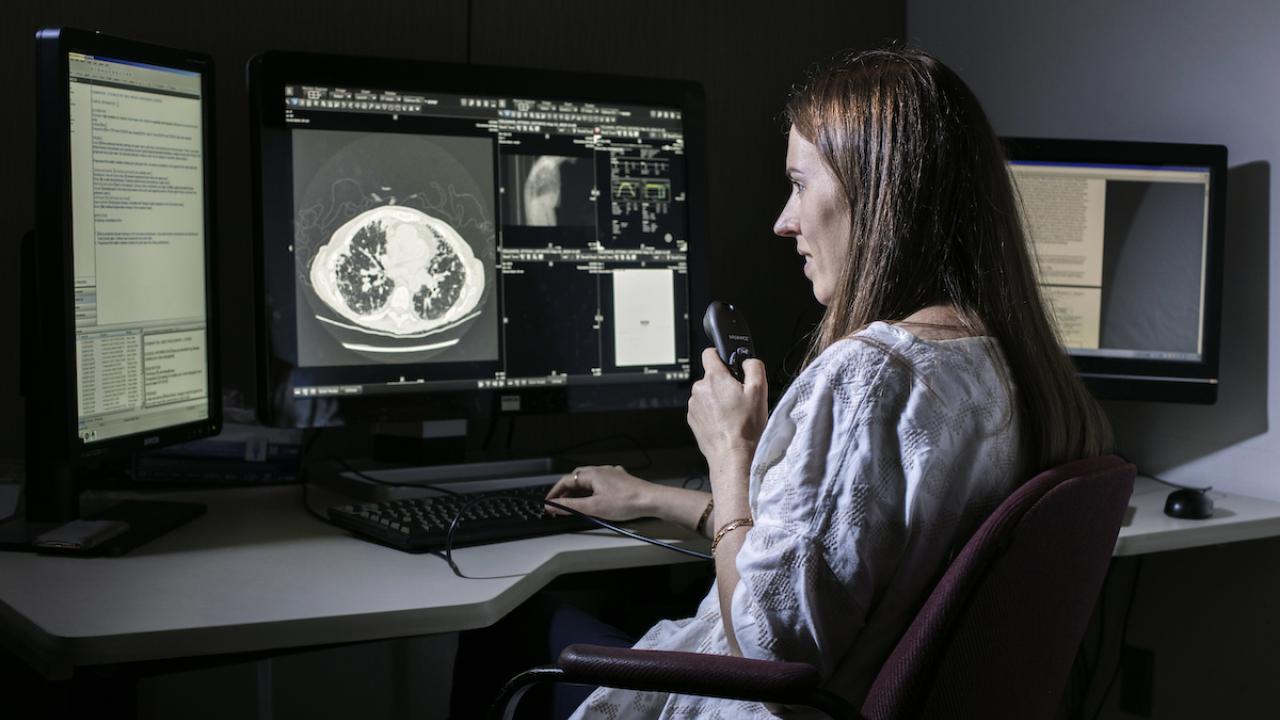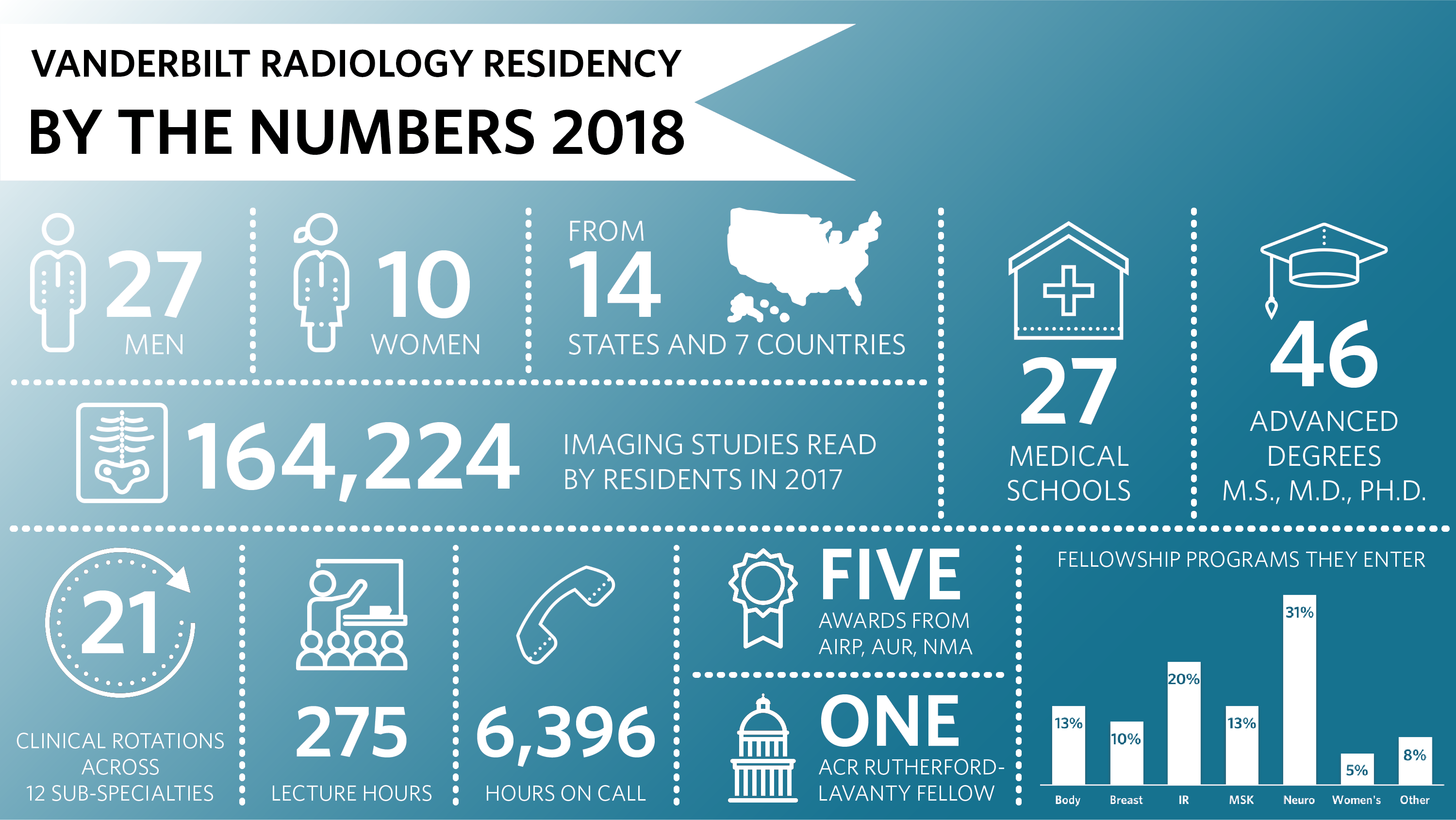The Residency Program of the The Institute of Ophthalmology and Visual Science, UMDNJ-New Jersey Medical School is fully accredited by the Accreditation Council of Graduate Medical Education. E NTRANCE R EQUIREMENTS Applicants must possess a valid Medical Training License from the State of New Jersey before entering the program. Our Residency Program in Diagnostic Radiology is a four-year program offering state of the art training in all aspects of Diagnostic Radiology, Interventional Radiology, as well as Nuclear Medicine.
According to the American Board of Radiology, “A Radiologist is a physician who uses imaging methodologies to diagnose and manage patients and provide therapeutic options.” Radiology is an exciting and ever-improving specialty which offers many options to subspecialize into any aspect of medical care. Applicants looking to go into Radiology must first start with Diagnostic Radiology before they can begin to subspecialize further. Basic training in Radiology lasts 6 years. There are two main types of programs: Categorical (6 years full residency training) and Advanced (begins at PGY-2 level). Most Diagnostic Programs are Advanced and require a Preliminary Intern Year (PGY-1) before candidates can begin the program. Radiology’s competitiveness level fluctuates but generally remains high. Candidates looking to apply to Radiology programs will need to be well rounded, with high USMLE scores (+240), strong clinical rotations, research experience, good Letters of Recommendation, a well written Personal Statement, and a personality suited for Radiology.
IMG Profile
Diagnostic Radiology
Average Stats for a Matched US IMG in 2018:
- USMLE Step 1 score: 239
- USMLE Step 2 CK score: 242
- Research: 1.6
- Abstracts/Presentations/etc: 2.6
- Work: 3.2
- Volunteer: 3.9
Average Stats for a Matched Non-US IMG in 2018:
- USMLE Step 1 score: 241
- USMLE Step 2 CK score: 243
- Research: 3.1
- Abstracts/Presentations/etc: 15.9
- Work: 5.4
- Volunteer: 3.1
Specialty Factors

Every specialty has unique factors they want each candidate to have in their residency application. NRMP conducts regular Program Director surveys to identify which parts of the residency application are most important in differing specialties. Among the information gathered, Program Directors were asked to to cite factors they used to select candidates for interviews. They were also asked to rate each factor on a scale from 1 (least important) to 5 (most important).
The Top 5 Most Important Radiology Application Factors
Percentage of Programs Citing Each Factor
- USMLE Step 1 score (95%)
- MSPE (91%)
- Specialty specific Letters of Recommendation (88%)
- Personal Statement (84%), Grades in required clerkships (84%)
- Consistency of grades (79%)
Average Importance Rating for Each Factor (scale of 1 to 5)
- Flagged by NRMP (4.8)
- Any failed attempt in USMLE (4.5)
- USMLE Step 1 score (4.4), Evidence of professionalism and ethics (4.4), Grades in clerkship in desired specialty (4.4)
- MSPE (4.3), Grades in required clerkships (4.3), Visa Status (4.3)
- Class ranking/quartile (4.2), Passing USMLE Step 2 CS (4.2)
Fast Facts
| Total Training | 6 years: 1 year of clinical internship (PGY-1) + 5 years of Radiology training. |
| Average Residency Salary | $63,000 |
| Average Work Week | 58 Hours |
| Peak Interview Months | Late November, Mid-January |
| Key Organizations and Societies: | American Board of Radiology Radiological Society of North America (RSNA) Association of University Radiologists (AUR) |
- Anyone who wishes to specialize in any of the subspecialty areas must first certify in Diagnostic Radiology
- The fill rate for advanced positions in Diagnostic Radiology declined to 86.3 percent, 7.9 percentage points from 2014. The percentages of categorical and advanced positions filled by U.S. seniors were new lows: 50.4 percent for categorical and 58.0 percent for advanced positions.
- Radiology is one of the major consultation specialties which requires a widespread knowledge base, research skills, and the ability to keep up with new modalities
- The most competitive locations for Radiology are California, Boston, New York, and Seattle
Match Statistics
Main Residency Match and Post-Match Stats
IMGs Matched
Number of Programs/Positions
Post-Match SOAP Unfilled Positions
Main Residency Match
PGY-2
Post-Match SOAP


| Program Track | Participating Programs | Filled Programs | Positions Available | Filled Positions |
| 0 | 0 | 0 | 0 | |
| PGY-2 | 2 | 2 | 3 | 3 |
| Program Track | PGY-2 | |
| Participating Programs | 0 | 2 |
| Filled Programs | 0 | 2 |
| Positions Available | 0 | 3 |
| Filled Positions | 0 | 3 |
Subspecialties
- Clinical neurophysiology
- Forensic psychiatry
- Addiction psychiatry
- Child and Adolescent Psychiatry
- Geriatric psychiatry
- Hospice and palliative medicine
- Pain management
- Psychosomatic medicine (also known as consultation-liaison psychiatry)

http://www.nrmp.org/wp-content/uploads/2018/04/Main-Match-Result-and-Data-2018.pdf
http://nrmp.org/wp-content/uploads/2018/07/NRMP-2018-Program-Director-Survey-for-WWW.pdf
http://www.nrmp.org/wp-content/uploads/2018/06/Charting-Outcomes-in-the-Match-2018-IMGs.pdf
Umdnj Radiology Residency Program
https://www.aur.org/uploadedfiles/alliances/amser/educator_resources/amser_guide_to_applying_for_radiology_residency.pdf

